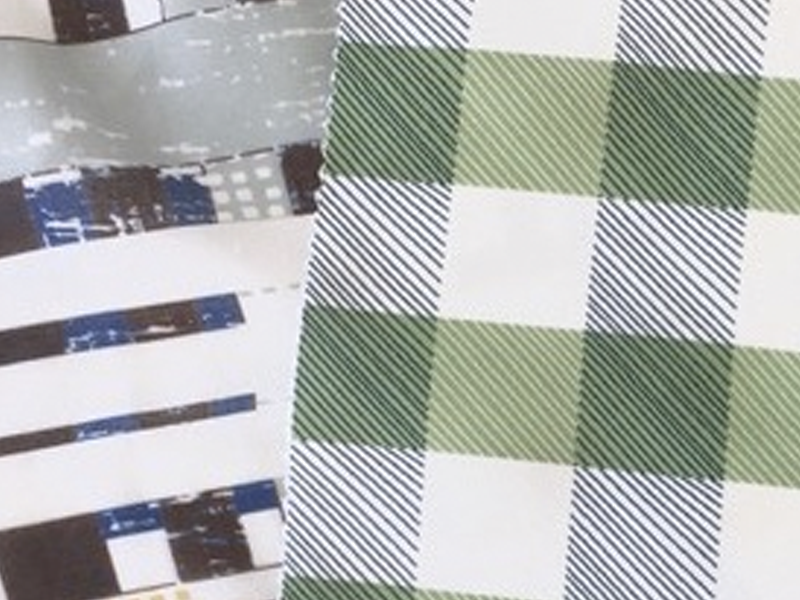We’re back with the third and final installment of our plaid series. Today we’re exploring the interesting intersection of the plaid pattern and the colonial textile industry. Read on for a design history lesson!
Gingham
One of the most familiar types of plaid is the gingham. This style features even bands of color overlaying a white background in a square check pattern. If you need a visual, just imagine The Wizard of Oz’s Dorothy in her sky blue and white pinafore dress.
Like much of fabric design, gingham has a somewhat contested history. Many world cultures recognize gingham as their own, and it represents a variety of symbolic meanings from Germany to Africa to Japan. Today, we are going to follow its heritage back to Dutch-colonized Malaysia.
The first known use of the word “gingham” was in 1615 and is attributed to the Malaysian word for striped: genggang. The gingham textiles exported to the West by the Dutch East India Company originally featured a unidirectional banding. Later on, when gingham production reached Northern England in the 18th century, the striped pattern was replaced by the more popular plaid check.
The simple and lightweight gingham weave was quickly embraced in America as an inexpensive yet sturdy material for everything from home furnishing to school uniforms. With the 1960s mod culture, gingham became a staple shirting fabric that offered a youthful and informal vibe. We often view gingham today as the quintessential Americana pattern, a print that can evoke both a preppy look and vintage feel.
Explore our range of gingham patterns here.
Madras
Madras is a type of plaid that traditionally features bright, multicolored stripes in an uneven layout. Another characteristic of this type of fabric is the irregular “slub” texture due to the delicate yarns not being smoothly combed out before being woven together. There are three madras varieties: the basic style, a busier patchworked version, and a rare “bleeding” dye variety.
Like gingham, the modern madras has historical roots in many places but was largely commercialized as a result of colonialism. In the mid 17th century, the English East India Company established a textile trading post in Madras (modern-day Chennai), India. This localized industry produced hand-woven, lightweight fabrics embellished with blue, black, and red vegetable dyes. As the English craze for tartan surged, the Company began to develop madras fabrics woven in plaid-like checks.
Interestingly enough, madras plaid was tied up in the history of America, when in 1718 the Governor of Madras, Elihu Yale, made a substantial donation to the fledgling Collegiate School of Connecticut. To honor the gift, the school permanently changed its name to Yale College. Ever since then, madras has represented the preppy collegiate look. Beyond the college campus, madras also came to be associated with the leisure class and their holiday wear.
Today, the U.S. Federal Trade Commission protects the production of madras fabric, dictating that the reversible check material must be hand-woven in Chennai. The madras pattern, however, is a great source of design inspiration for anyone to use. Give your WeaveUp plaids a fresh, summery look or vibrant, tropical demeanor with customizable madras-style colorways.
Experiment with the hidden madras in all our plaid designs here.
That wraps up our three-part plaid series! You can catch up on our entire Textile Design Guide series here, and stay tuned for more explorations of textile history coming soon.









Leave A Comment